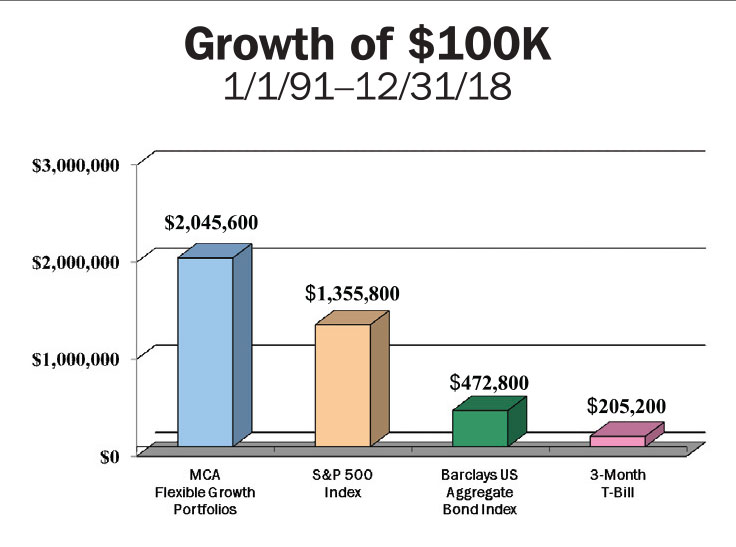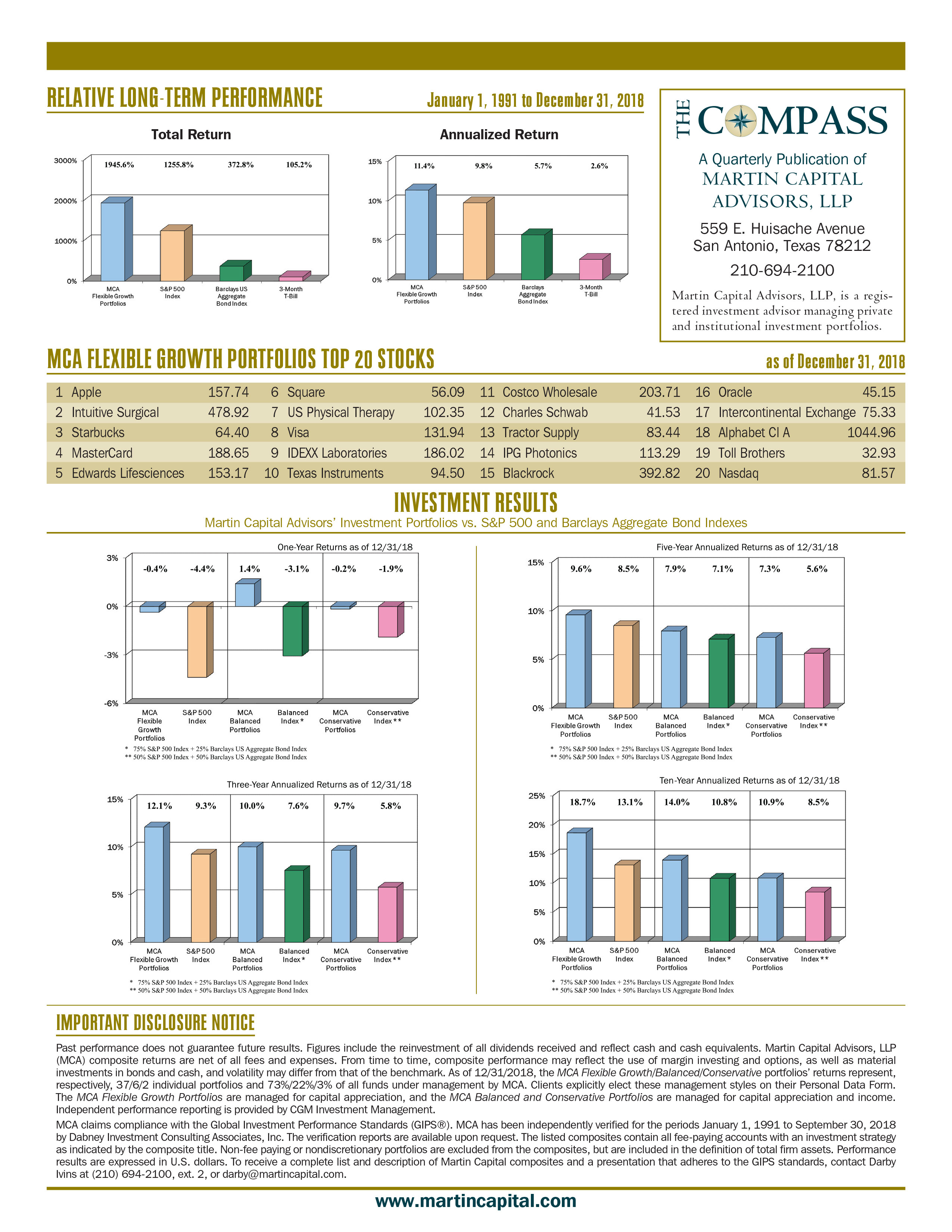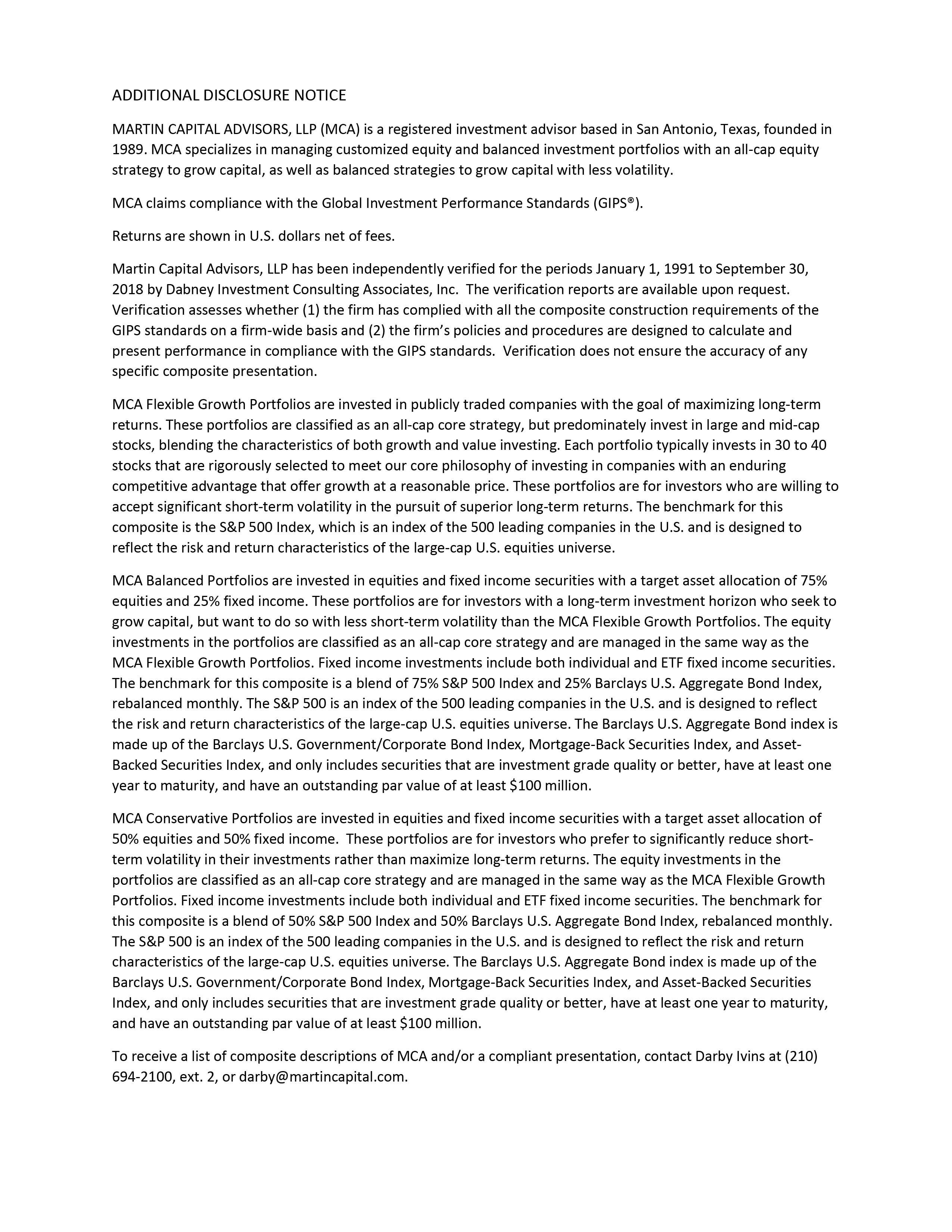
Hawkish statements from the Fed resulted in a significant pullback in the stock market in the fourth quarter, and slightly negative returns for the year in the wake of very robust performance through the end of the third quarter. Bond yields fell and prices rose in anticipation of Fed Funds rate increases leading to the possibility of a recession sooner than later. The good news is that corporate earnings were very strong throughout the past year, so equity valuations are much more attractive today than they were a year ago.
With signs that the Fed may be less restrictive in 2019, stocks have rebounded at the beginning of the first quarter, resulting in the best January performance for the S&P 500 in 30 years. This may be a good sign, as above average performance in January has historically been a harbinger of above average returns for the year. That said, there are still many political and global uncertainties that could weigh on the economy and financial markets in the coming months. However, the odds are that the stock market may have bottomed in December, so any global disruptions or political uncertainties from here probably should be looked at as more of a buying opportunity than a reason to sell, with the caveat that short term timing is a very difficult game to play.
Although stocks are one of the most volatile asset classes, they are also the best performing in the long run. This is because most companies have been very successful at growing their earnings over time – some better than others, of course. The problem is that short-term corporate missteps, political and global uncertainties, and Fed driven recessions scare many investors out of great businesses and into more conservative strategies. At Martin Capital, we look for great businesses at reasonable valuations that we think have the kinds of products and services that could double their earnings in five years. This approach allows us to weather the storms of unpredictable volatility and stay focused on the long-term potential of companies in which we invest. However, the Fed has driven the economy into every recession, at least since the 1950s, so we will continue to monitor their actions very closely and offer an options hedging strategy to our clients in the event of a severe yield curve inversion.




